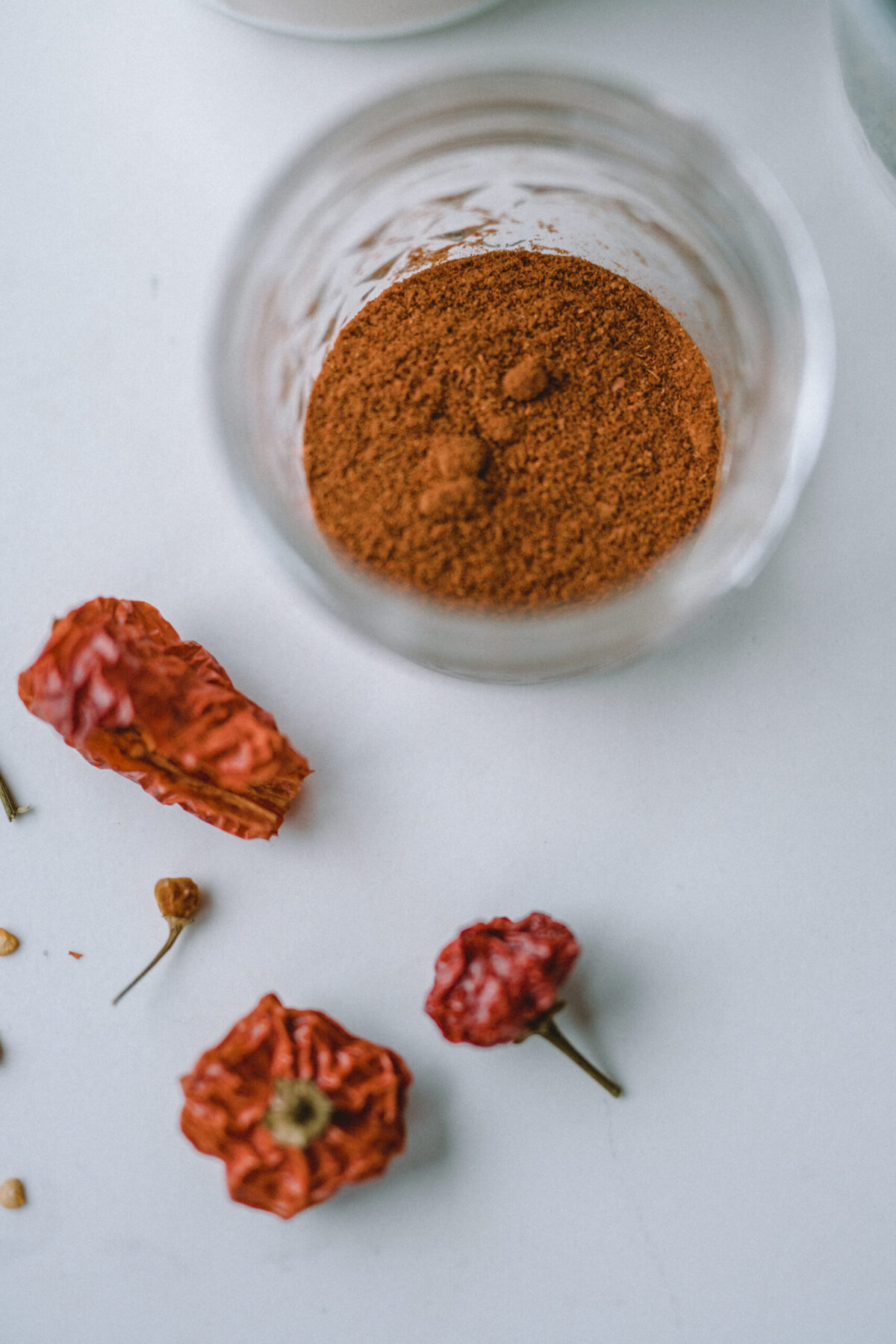
The Three Aspects of Taste in Ayurveda
In our new Ayurveda and Digestive Health Intensive in The Herbarium, Ayurvedic practitioner and Certified Iyengar Yoga teacher Greta Kent-Stoll, delves into the foundational concepts of ayurvedic eating, such as the six tastes, and the role that each of the three doshas plays in digestive health. You will learn how to recognize vata-, pitta-, or kapha-type digestive imbalance and what to do to provide support and balance. In the excerpt below, read about the three aspects of taste in Ayurveda.
Below is a glimpse inside the 4-Session Intensive:
An Ayurvedic Foundation
Ayurveda is a complete holistic system of traditional healing. Its essential aim is to bring your body back into a state of natural balance so that your ability to self-heal is optimized. Ayurveda, literally translated as “knowledge of life,” is perhaps the oldest form of medicine still in practice today. It predates even Traditional Chinese Medicine, and systems such as Traditional Chinese Medicine and Tibetan medicine were certainly influenced by Ayurveda.
Those who practice Ayurveda understand that balance is a relative word. Each individual possesses a unique state of inherent balance. Some people naturally run warm (pitta types); others naturally run cool (vata and kapha types). Some body types are a little heavier and fuller; some lighter and leaner. What is ideal and harmonious for one person may not be ideal and harmonious for another. This is all dependent upon one’s dosha, or unique constitution. The foods, herbs, and lifestyle practices that bring one person into harmony may drive another into a state of illness and vice versa.
The essential approach in Ayurveda is to employ the opposite. Herbs, foods, sensory therapies, body therapies, and lifestyle practices are recommended in order to reduce imbalances and bring the individual back into a state of natural health and well-being.

Digestion is Foundational in Ayurveda
Furthermore, agni (digestive fire), prana (life force), and ojas (vitality) are like the three legs of a three-legged stool: each one plays a key role in health—and if one goes, the whole stool topples over. However, in many ways, agni comes first, as without good digestion one cannot have sufficiently circulating prana (life force), nor can one build and maintain good ojas (vigor and vitality).
You can think of agni (digestive fire) like a campfire. You want to keep it burning steady and bright, adding in just the right amount of fuel at the right times. This campfire within plays the role of catabolism and anabolism. It is responsible for breaking our food down into smaller pieces that can then be digested and absorbed. It also ties into whether or not we build healthy tissues (Halpern, 2012).
“On the physical level, digestion is the single most important determinant of good health. This is because the quality of a person’s digestion is directly related to the ability of the body to build quality, healthy tissue” (Halpern, 2012).
If agni is weak, we may build ample tissue, such as adipose (fat) tissue, but it will be of low quality. Or, if agni is low, we may fail to build healthy bone and muscle tissue. If the digestive fire is overly powerful the body will become depleted, literally burning itself up. Either way, if the agni is out of balance, whether the bodily tissues are excessive or deficient, energy levels and overall health and luster will be compromised. Overall, when we practice mindful eating and choose foods that are appropriate for our constitution, climate, and season, then we optimize our chances at building healthy tissues and having general good health.

Aspects of Taste: Rasa, Virya, and Vipaka
One of the key tools used in Ayurveda to help clients regain balance is to work with rasa (taste). Specific foods, recipes, and herbs possess tastes that can have a balancing effect on an individual. Taste involves the effect that a food or herb has on the body after consumption. There are three essential parts to taste: rasa (the initial taste), virya (warm vs. cool) and vipaka (the post-digestive effect). Every food and herb can be described in terms of rasa, virya, and vipaka. As Dr. Vasant Lad states, “The concept of taste (rasa), action (virya) and post-digestive effect (vipaka) will further one’s understanding of the basic principles of Ayurvedic cooking and healing” (2009, p. 34).
The Caraka Samhita, one of Ayurveda’s classical texts, states: “There are six rasas (tastes): sweet, sour, saline, pungent, bitter, and astringent. When employed properly, they maintain the body and their incorrect utilization results in the vitiation of the dosas” (Dash & Sharma, 2014, p. 113). Put simply, a taste can be balancing or harmful depending on the effect it has on one’s Ayurvedic dosha (one’s constitutional type). According to Ayurvedic teachings, the effects of rasa are far-reaching. They are both physical and subtle.
An obvious example of virya is cayenne, which has a pungent (hot) rasa and a hot virya. The overall effect of cayenne is that it is heating and stimulating. This is helpful for those whose circulation and digestion need a boost. Conversely, red clover has both a bitter and sweet rasa and a cool virya. A cool virya is desirable for those who run warm or who have heated conditions such as rashes, acne, and anger. Conversely, the cool herbs may aggravate those who naturally have a cooler body temperature or who suffer depletion or lethargy. However, a cool herb can be combined with a warm herb in some cases to counterbalance any undesirable influence on temperature.
Vipaka is a slightly more complex concept. The literal translation is the “post-digestive effect,” but how it translates in practical terms is whether a substance is tonifying or purifying. Tonifying herbs are strengthening and fortifying. They help to build and regenerate bodily tissues. Purifying herbs reduce tissues and in some cases assist in removing pathogens.
There are three types of vipaka: sweet, sour, and pungent. Herbs with a tonifying nature have a sweet vipaka. This means that their post-digestive effect is nourishing. Herbs that are purifying or reducing have a pungent vipaka. The sour vipaka is somewhere in between. It has a somewhat nourishing effect, but not as much as the sweet vipaka.

The table below outlines the six rasas and their typical corresponding virya and vipaka. It is important to note, however, that particularly in herbalism these relationships are not fixed. For instance, there are sweet herbs that possess a warm virya. The table below represents the typical relationships.
| Rasa | Virya | Vipaka |
| sweet | cool | sweet |
| salty | warm | sweet |
| sour | warm | sour |
| astringent | cool | pungent |
| pungent | warm | pungent |
| bitter | cool | pungent |
Ayurveda teaches that in order for a practitioner to be successful, he or she must understand the nature of the person being assessed, the nature of the health imbalance, and the nature of the herb. By the nature of the individual, we are referring to their inherent constitutional balance, or dosha, as well as their current state as characterized by the three doshas. One must understand the rasa, virya, and vipaka of the herb as well as the qualities of the individual taking the herb. Understanding rasa, virya, and vipaka furthers our understanding of herbalism as well as Ayurvedic cooking and healing. Most importantly, knowing the rasa, virya, and vipaka of an herb enhances the practitioner’s ability to fine tune herbal therapies to more effectively support an individual (Halpern, 2012).
In Closing,
There is a saying in Ayurveda that “everything is right for someone but nothing is right for everyone.” This certainly holds true when it comes to Ayurvedic herbalism. Understanding an herb’s rasa, virya, and vipaka give the practitioner vital clues about the appropriate application of an herb. By understanding the nuanced qualities of an herb and how they intermingle with the attributes of the person imbibing, we become more skilled as practitioners and more able to select herbs with precision and wisdom.
Members of The Herbarium can join Greta in a video series as she shares the foundational concepts of ayurvedic eating. You’ll find our new Ayurveda and Digestive Health Intensive in The Herbarium.
Interested but not yet a member of The Herbarium? Get access today with a 3 day trial for only $3!








